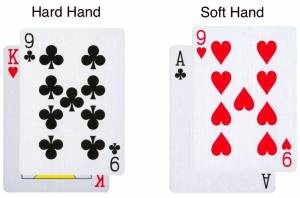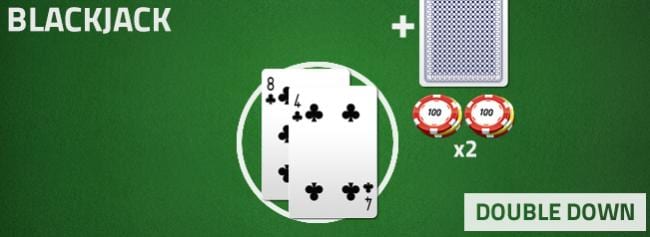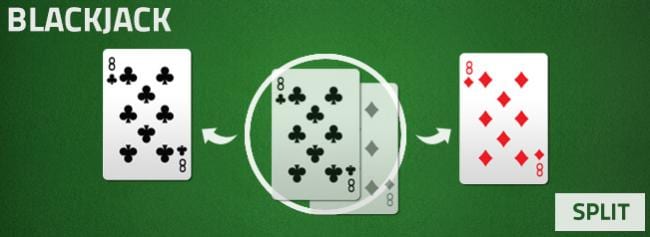
How To Play Blackjack
Blackjack is one of the most straightforward games to get accustomed to at the casino as there are only a few rules to learn how to play blackjack.
First Steps on learning How to Play Blackjack
Learning how to play blackjack initially starts with two cards and the aim of the game is to get to 21, or beat the dealer’s cards.
Going over 21 means you ‘bust’ and you automatically lose the game, getting more than the dealer means you win, and getting the same number as the dealer means you tie and retain your money for the next round.
Main card value on Blackjack
The Ace card is worth either 11 or 1 and the picture cards (King, Queen, Jack) are worth 10. Hitting an Ace and a picture card, or a 10, is the ideal situation and is called, ‘Blackjack’.
The dealer must always request a new card when on 16 or lower, but the house has an edge of 0.5% in traditional Blackjack.
The reason for the house edge in Blackjack is because one of the dealer’s cards is not exposed and players must make decisions based on intuition and faith, and therefore can go bust before even knowing what cards they need to beat.
When or if you win a hand you double the money you bet, if you lose you lose your money, and if you win with a Blackjack you traditionally win 1.5 times the bet.
Blackjack Strategies
When you’re learning how to play blackjack, it’s important to note that there are four categories of Blackjack hands that you’re going to face and should memorise. Of course, these strategies won’t win you ever hand, but they give you the best possible opportunity to beat the house:
Hard Hands
A hard hand is classified as a hand which simply doesn’t include an Ace. You should always ‘hit’ on a hard hand that totals 11 or less as there is no risk, and no way you’ll go bust when receiving your next card.
Remember to always ‘stand’ or ‘stick’ on a hand that totals between 17 and 21, but it gets a little bit trickier when you get cards that total between 12 and 16, and it all depends on what cards the dealer is showing.
Should you have 13-16 and the dealer is showing a 6 or lower you should stand, if they’re showing a 7 or higher you should hit. The reason for this is that a 10 is the most likely card in the game of blackjack as there are four different types of 10 you can hit.
If you assume the other card that the dealer has is a 10 and they have a 6, that total is 16 and therefore the dealer must hit which is a risky move. If it’s a 7 that they are showing, and you presume they have a 10, they have 17 which means the dealer sticks, so you need to think about beating that total.

Soft Hands
A soft Blackjack hand is a hand which includes an Ace where you can either play the ace as a 1 or an 11. Hitting an ace gives you the opportunity to hit on your next card without risking going bust.
There are quite a few permutations with soft hands in Blackjack, though there are only 8 possible soft totals.
If you have a soft 13 or 14 you should hit unless the dealer shows a 5 or 6 and then you should double down.
On a soft 15 or 16 you should double down if the dealer is showing 4 through to 6, otherwise, you should double down.
With a soft 17 you should hit if the dealer has a 2 or an 8 or higher, you should stand on a 7, and you should double down on 3 through to 6.
On a soft 18 you should double down if the dealer is showing 3 and 4, you should stand if they’re showing 2, 7, 8 or Ace, and you should hit if the dealer is showing 9 or 10.
Finally, you should always stand with a soft 20 or 19, and of course, if you have 21 you have Blackjack!
Doubling Down
Doubling down means you double the bet on your hand, but consequently, you will only be able to receive one more card.

It’s important to note that you should always double down on 11 unless the dealer is showing an Ace because, as 10 is the most likely card, a 10 added to 21 wins or at least ties you the game, unless the dealer hits Blackjack (which would be likely if they were showing an Ace).
You should also double on a 9 if a dealer is showing a 3 to 6, and you should also double on a 10 unless the dealer is showing a 10 or Ace.
There are more double down potentials in the next section.
Splitting Hands
At a time you’re dealt the same numbers you have the option to double your bet and split your cards, putting a single bet on each hand.

Always split on aces of course, as you then have a potential of nailing two Blackjacks. You should also always split on 8’s because two 8’s gives you the unenviable total of 16.
You should never split fours or fives.
If the dealer is showing 3 to 6 and you have a 6 you should always split.
You should split 7’s if the dealer is showing a 2 through to 7.
And you should always split 9’s if the dealer is showing a 7.
Now that you’ve learnt How to Play Blackjack, it’s time to find you a good bonus, and get you testing and perfecting your blackjack skills.
